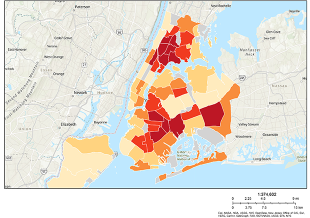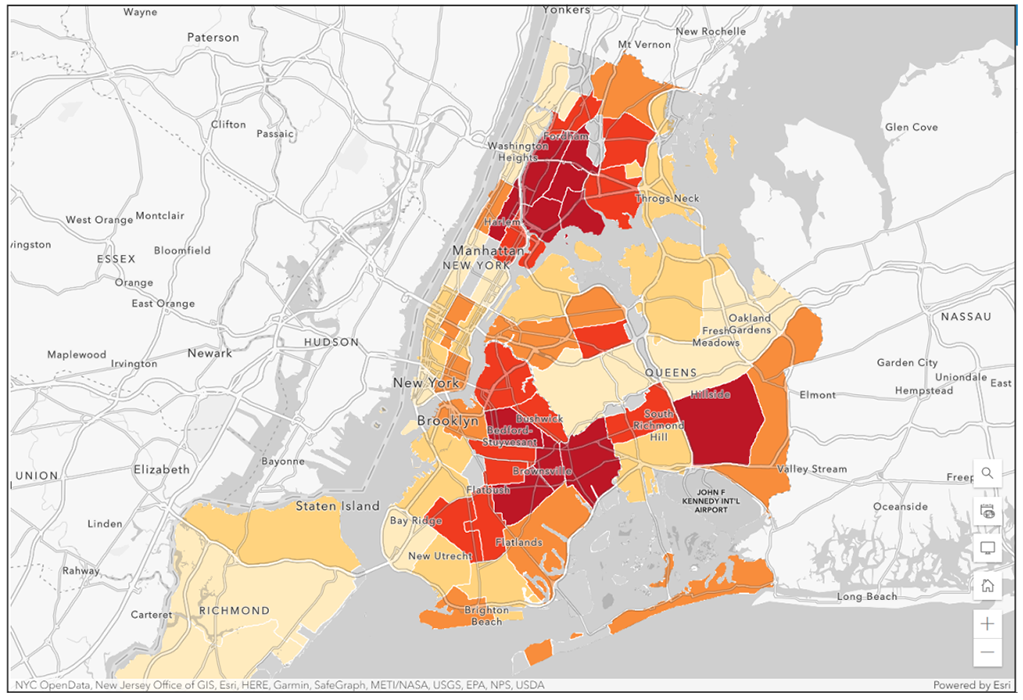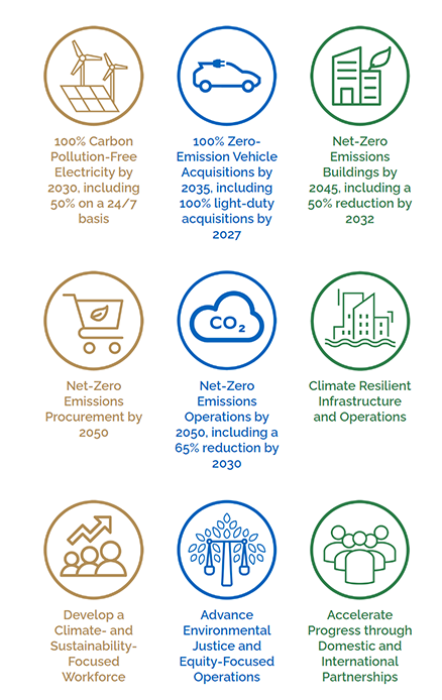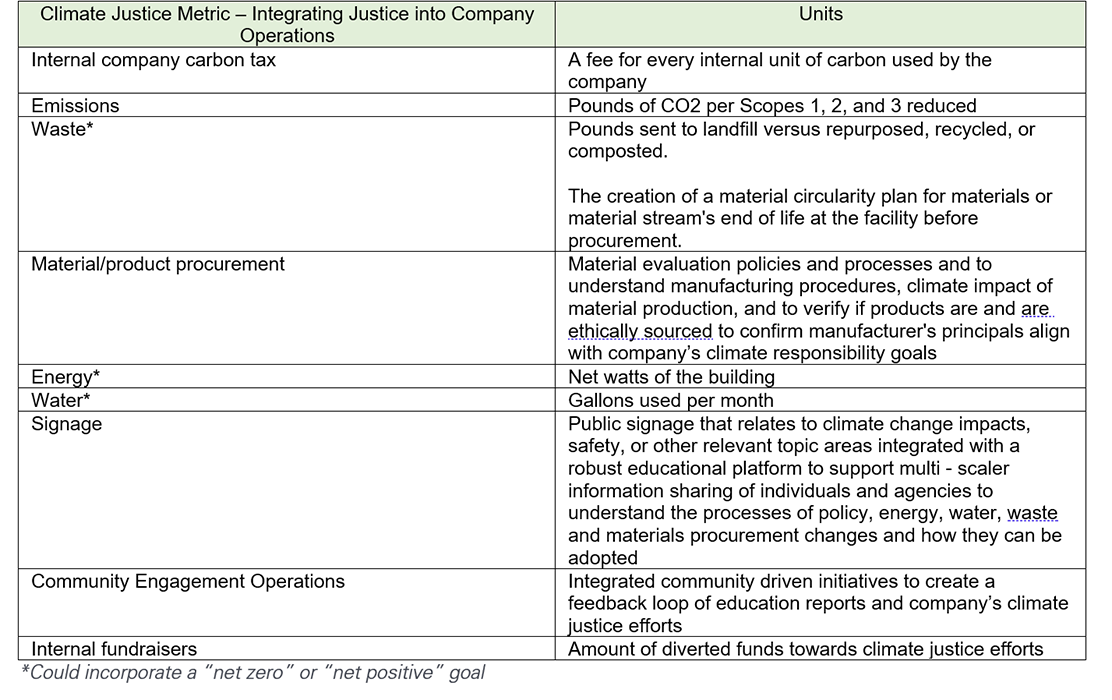News | Thought Leadership
Climate Action: Climate Policy & Equity

 Mary Anne Woody, Anais Teyton, Lucy Piacentini, Matthew Bilik, Dr. Reginald Blake, and Dr. Hamidreza Norouzi
Mary Anne Woody, Anais Teyton, Lucy Piacentini, Matthew Bilik, Dr. Reginald Blake, and Dr. Hamidreza Norouzi
This week in our continuing series showcasing how engineers and scientists can play a key role in addressing the short- and long-term challenges of climate change, our latest blog outlines the steps for addressing inequalities through mapping, analysis, and holistic design, with examples from Thornton Tomasetti's practices in developing climate equity frameworks and sustainable, resilient infrastructure.

Climate change disproportionately affects low Income and BIPOC (black, indigenous, and people of color) because of socio-economic disadvantages and the lack of investment in resilient infrastructure within affected communities. It’s important to highlight our role as engineers and designers of the built environment and how we can and must influence decisions that promote climate equity.
Wellness and Quality of Life
There is a direct relationship between income and quality of life. There is also a direct proportional relationship between the built environment and the wellbeing/quality of life of its inhabitants. People are only able to inhabit places that they can afford. Underserved communities tend to be more vulnerable to environmental degradation and escalating climate conditions like flooding and extreme heat.
The urban heat island (UHI) effect is the phenomenon where cities replace natural land cover with dense concentrations of pavement, buildings, and other surfaces that absorb and retain heat. This makes dense, populated neighborhoods more vulnerable to extreme heat. UHI is most prevalent in urban areas where there is a lack of greenspace, adequate ventilation, open spaces, adequate cooling systems or accessible cooling facilities for residents. Due to these conditions, extreme heat has killed more Americans than any other weather-related disaster.
Is infrastructure equitable?
Because of socio-economic challenges rooted in historical discrimination like redlining and poor zoning regulations, vulnerable populations have been forced to live in underinvested, low-lying neighborhoods. Such neighborhoods are now hotter, noisier and more prone to flooding, and they lack adequate grocery stores, healthcare facilities, affordable housing, public transportation, greenspace and, most importantly, resilient infrastructure. These circumstances contribute to an atmosphere that negatively affects the quality of life, wellness and mental health of these communities' constituents by forcing a challenged and strained relationship with the built environment—a built environment in which infrastructure has failed them.
As engineers and designers, it is a necessity that we acknowledge that increasing wellness, livability and viability in vulnerable communities amid climate escalation is imperative to achieve a future with climate equity.
Equity, Risks and Vulnerability
Environmental injustice and climate change−based inequality, like poverty, is a reinforcing feedback loop. Those most vulnerable to environmental burdens will continue to be disproportionately at-risk until intervention is taken.
The social and historical context of a site should not be viewed as a limiting factor but should be used as a parameter to encourage the design of not only resilient infrastructure but reliable infrastructure. By considering site context, assessing risk and vulnerability and identifying the lack of access to resources, we can design sites through the lens of climate justice. Respectively, evaluating the urban fabric and creating resilient landscapes that challenge a site’s current conditions makes resilient and reliable infrastructure more accessible.
Awareness, Advocacy and Engagement “VOICE”
Discrimination within the built environment is not limited to low income and BIPOC communities but also includes the unhoused, individuals with disabilities and the elderly—all of whom lack access to a built environment that serves them with sufficient social services, safe neighborhoods and political power.
Thornton Tomasetti advocates for climate justice by first acknowledging that disabled citizens, people of color and other marginalized groups are disproportionately affected by climate change and have historically been left out of the planning and development processes of the built environment. Defining unserved groups provides a factual foundation that can drive design, policy and infrastructural change. We strive for equality in our designs with a multifaceted approach that incorporates solutions regarding leadership, resilience, sustainability, structural adaptation, mobility, waste reduction, resource allocation and equitable access.
What is the role of designers?
In planning for resilient infrastructure, design professionals become advocates and allies for the underserved and at-risk vulnerable communities. Our role as engineers, designers and innovators is to design resilient infrastructure with equity, diversity and inclusion in mind. This is our commitment and contribution to the built environment through ‘positive infrastructure.’
How do we break the cycle?
A holistic framework is required to address climate equity and change the accessibility of sustainable and resilient infrastructure in poor and marginalized communities. This framework gives voice to those that are discriminated against and improves their relationship to the built environment by creating sustainable, resilient infrastructure.
Climate Policy and Resilient Communities “ACTION”
We help our clients develop diplomacy and actionable policy to bring positive changes to right existing inequalities. We work alongside owners, public agencies and governments to advance climate equity by informing policy, planning and processes that empower communities and promote equitable area-wide resilience.
We acknowledge policies and agencies including the Federal Sustainability Plan, Bipartisan Infrastructure Law, the Better Climate Challenge and the National Building Performance Standards (BPS) Coalition. We take action in designing and recommending resilient strategies and sustainable infrastructure that incorporate climate policies, exceed local building code minimums, and adopting industry resilience frameworks—including the Climate Resiliency Design Guidelines, Waterfront Alliance’s Waterfront Edge Design Guidelines (WEDG), Institute of Sustainable Infrastructure’s Envision Sustainable Infrastructure Framework (Envision), American Planning Association’s (APA) Guide for Planning for Infrastructure Resilience and RELi Rating System—to make climate policy equitable.
The current WEDG and Envision manuals have guidelines that directly address aspects of climate equity and community resilience. WEDG has recently revised their manual V2.O to V3.0. One of the biggest changes of note is the expansion of climate equity across the guidelines and credit requirements that pushes designers to address issues of urban heat, environmental justice and community engagement for vulnerable communities that have been neglected or put at-risk by poor planning practices in the past. Envision V3 directly addresses issues related to equity and social justice, preservation of history and culture resources, accessibility and the improvement of quality of life. With these standards, Thornton Tomasetti is able to advocate for and support unserved communities through equitable design and master planning.
The first step in correcting urban inequalities is to identify them. By mapping inequalities, we can consider socio-economic factors, zoning, urban heat island effect, land use, regulations and developments within the urban grid and use computational modeling and spatial data analysis (i.e., open-source data, GIS, Grasshopper) to not only identify gaps of inequality and communities more vulnerable to risk but also to design solutions. We analyze, map and interpret spatial data as a response to environmental injustices and systemic inequalities related to infrastructure and the built environment.
The second step is to use the results of our analyses to increase the opportunities for a holistic design and investment in equitable and resilient infrastructure and policy. For example, Thornton Tomasetti’s Sustainability and Resilience practices are developing a climate equity framework inspired by a waterfront project in Boston. As part of this framework, we help clients and organizations identify climate equity goals, targets and strategies as they relate to structural and site adaptation, mobility and transportation, waste management and climate advocacy. Clients can integrate these strategies into their organizations’ operations using the following goal setting guidelines and metrics:
We not only understand the issues of climate justice and equity impacting our projects and surrounding communities, but we have the knowledge and tools to address them with innovative design solutions and consulting services that promote more resilient and equitable communities for all stakeholders.
Climate change is one of the biggest challenges facing our society. And because it affects everyone, it demands our creativity, passion and collaboration to build a better, more enduring world. See how Thornton Tomasetti is one of the only firms with the expertise to help you think holistically about a range of steps to address climate change.



